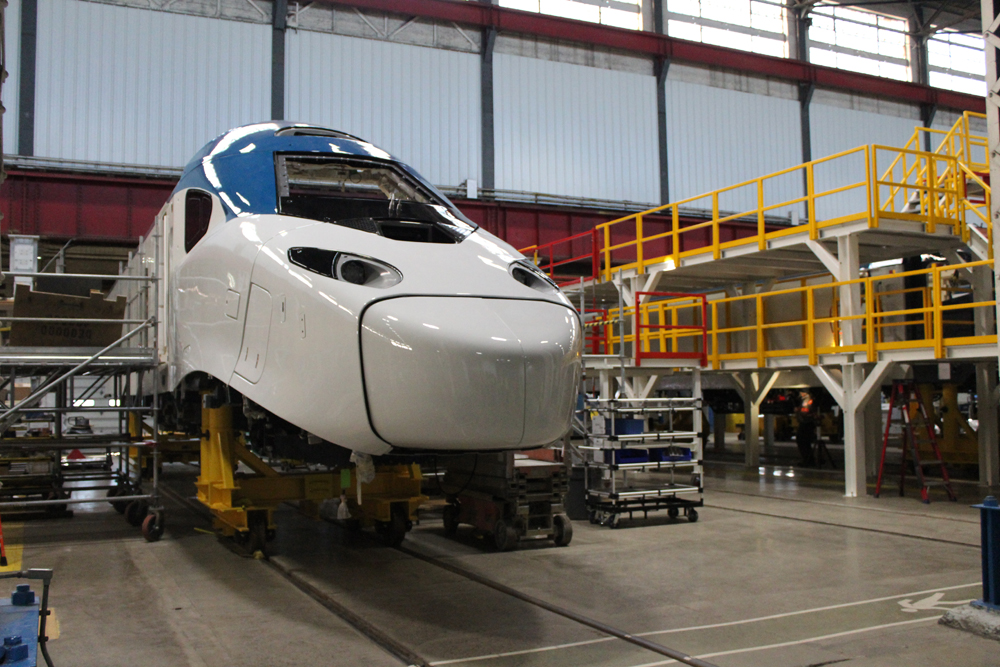
SAINT-OUEN-SUR-SEINE, France — Alstom, the world’s second-largest rail rolling stock manufacturer is seeking to sell up to 1 billion euros in assets (about $1.09 billion) and cut 1,500 jobs as it faces a negative cash flow and a massive drop in stock value, Reuters reports. The company is also considering a capital increase.
The company, with some 80,000 employees worldwide and rail interests including the troubled contract to manufacture Amtrak’s next-generation Acela trainsets in Hornell, N.Y., last month forecast a negative free cash flow of 500 million to 750 million euros. It has lost about $4.5 billion in market value this year, almost half its capitalization.
The Financial Times reports the company has more than 90 billion euros in equipment and related services on order, but is facing short-term problems such as downpayment on some deals not arriving as quickly as had been planned. CEO Henri Poupart-Lafarge told the newspaper that the cash warning was “a call for change,” and outlined moves to cut the company’s net debt by 2 billion euros from a figure of 3.4 billion euros at the end of September.
Many of the problems the company currently faces, as the Financial Times reported earlier this week, stem from the acquisition of Bombardier, a deal completed in 2021 [see “Astom reaches agreement to buy Bombardier,” Trains News Wire, Feb. 17, 2020]. The resulting deal created a rail manufacturer second only to China’s CRRC. Some of the contracts inherited from Bombardier were money-losers, and the expanded company has struggled with inventory and production.






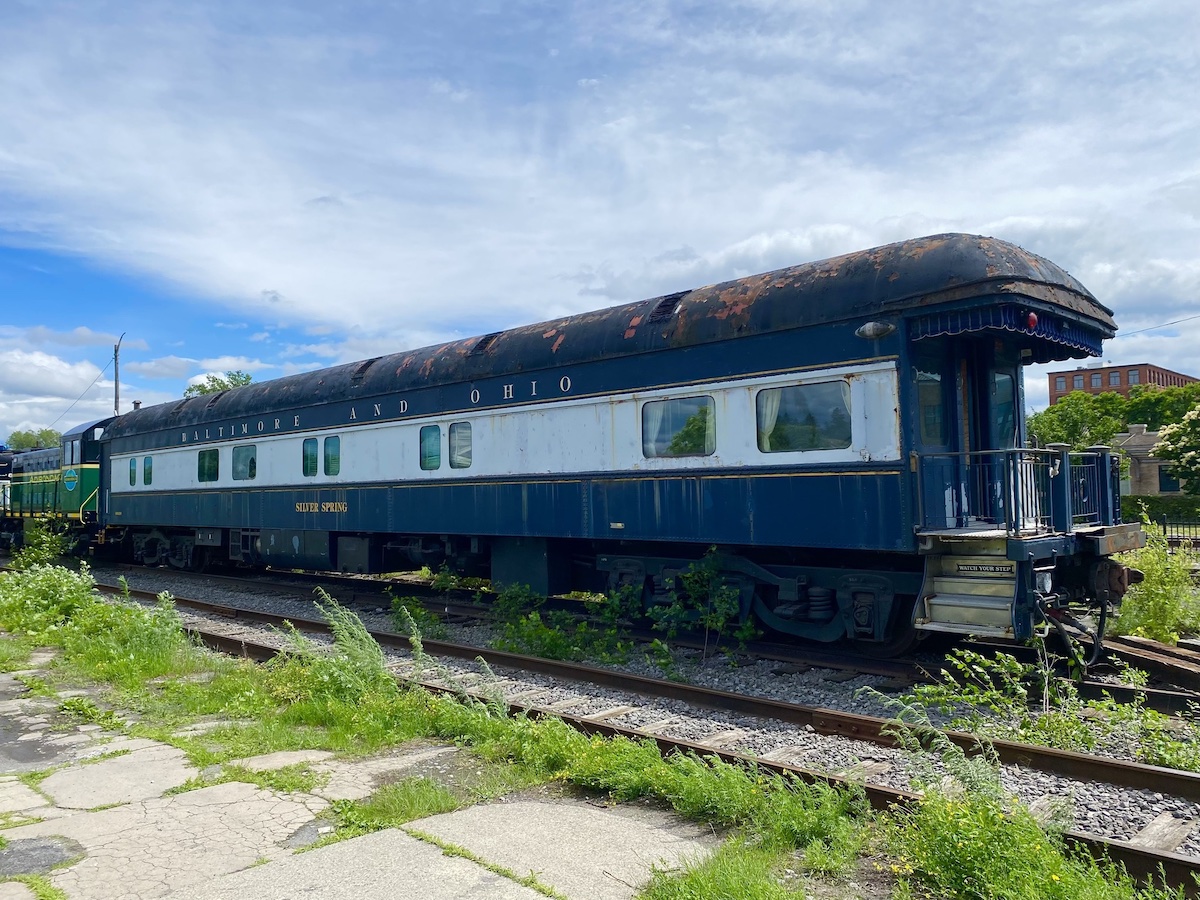
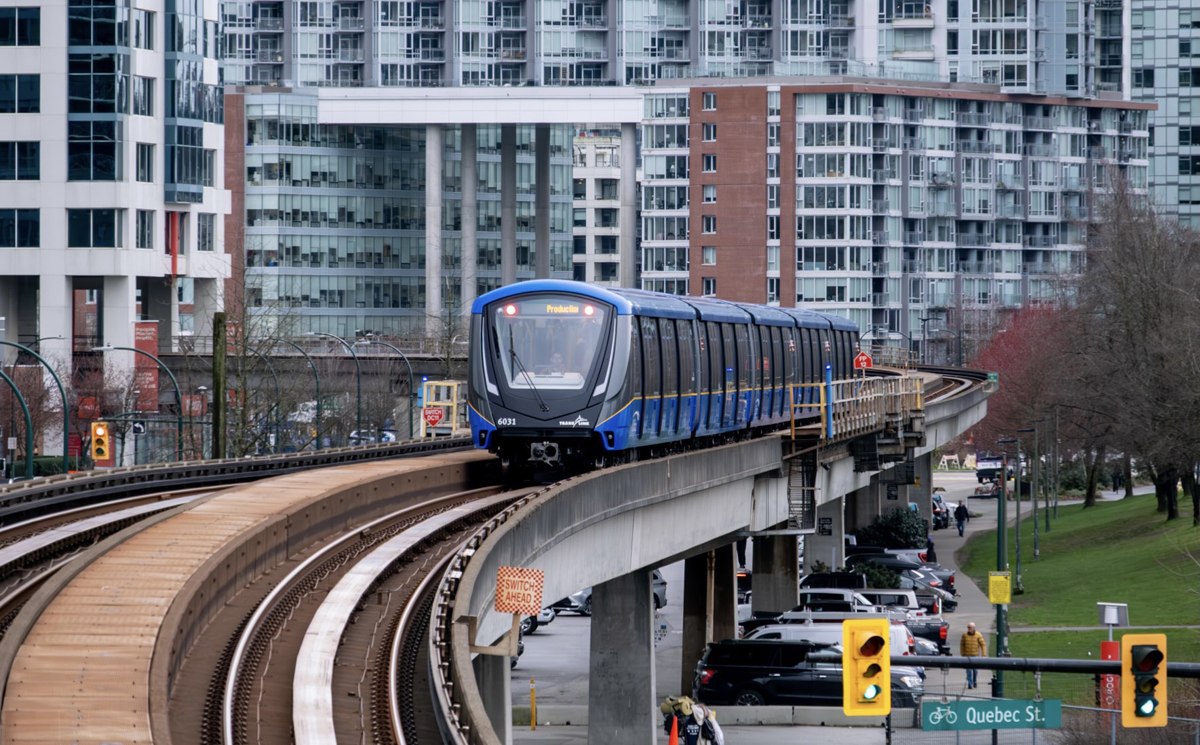
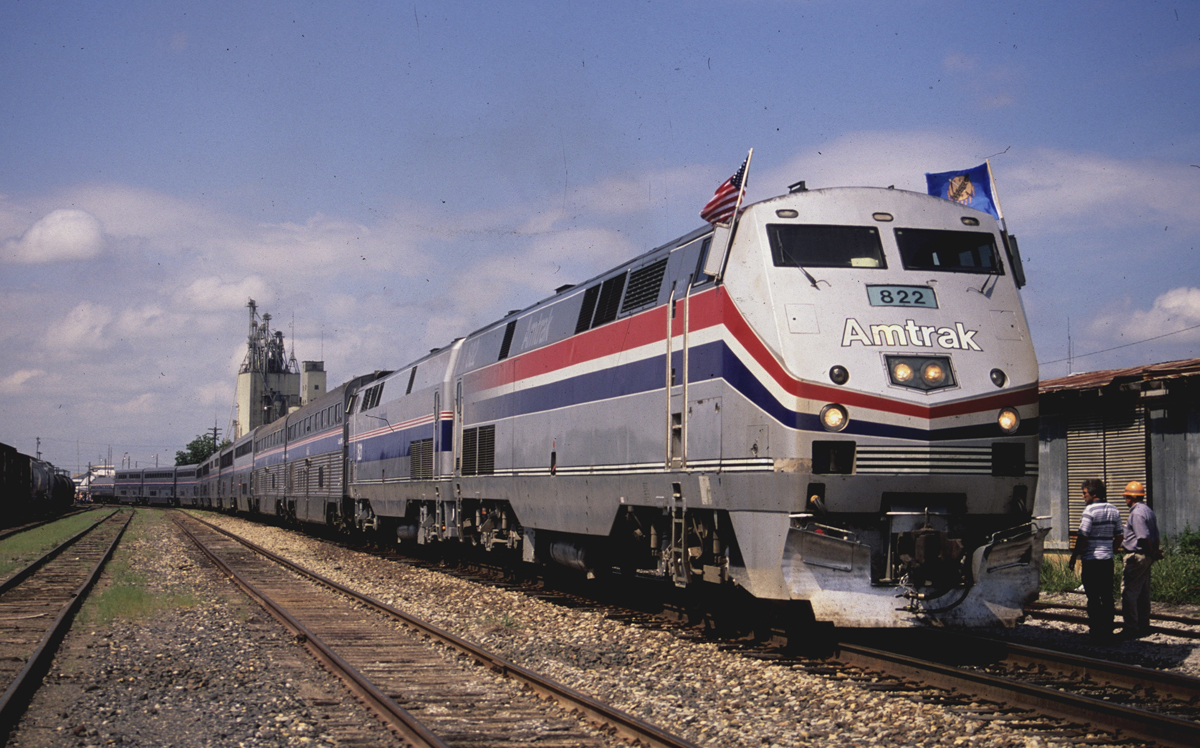
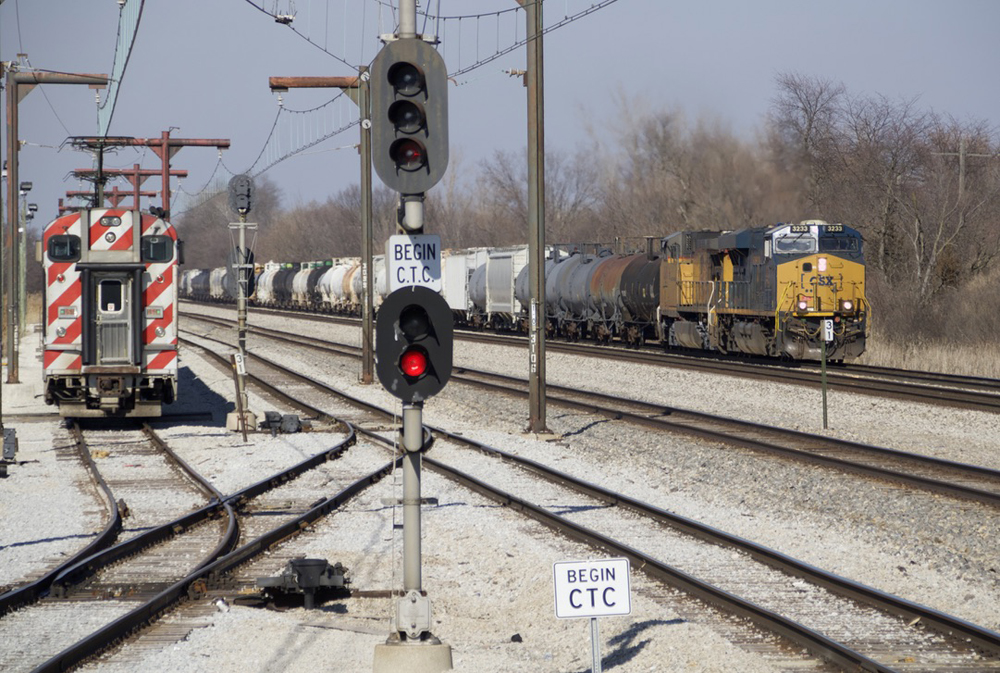




Remember, Alstom and Siemens wanted to merge but the EU nixed that plan. Maybe Siemens Mobility can pick the bones of whatever carcass is left.
This time, even the order of new TGV train sets supported by the French government will not seem to give Alstom a sigh of relief.
Dr. Güntürk Üstün
Points back to the good old days when railcar builders and manufacturers built long lasting quality equipment that ran with no mechanical or structural issues and gave years of reliable service and the equipment was easy to maintain and repair and didn’t spend long hours in repair shops or on storage tracks. One thing to note that with all these mega mergers of global concerns and then outsourcing the work and assembly to local plants around the world in some remote areas, the quality of the work and finished product leaves much to be desired with poorly performing equipment and short lifespans of operation. The old locomotive builders like Alco, Baldwin, Fairbanks Morse who also built and supplied motors and parts for the marine and shipbuilding industry and car builders like Budd, Pullman Standard, ACF and St Louis Car and built their products with quality and durability and longevity . Look at the NYC transit system for example. When they started buying subway cars built by Kawaski, Altsom and Bombardier etc all the difficulties and issues they had with getting these cars operating and performing up to standard. Of course we can’t forget the debacle that the MTA had with the R-44 and R-46 cars built by Pullman Standard which was a disaster until they were able to correct the issues with the help of Pullman Standard engineers and designers but for a time all the old equipment some awaiting scrapping and retirement had to be pressed back into service to meet the gap caused by the R44 and R 46 cars being taken out of service. Today’s builders of rail equipment and the same goes for automobiles build things that will not last the many years that the old reliable trains and autos did and were built with quality and durability. I might add that while the rage today with auto manufacturers is building SUVs there is nothing of style or beauty or the classic design that the autos of the 50s and 60s had. but rather todays autos especially the SUVs are ugly and boxy looking and look more like something that can be used or adapted for military use the way they look. Even today’s gruise ships are ugly boxy looking things on water and lack the style and grace and streamlined look of the classic ocean lines of the past. Mergers and mega mergers can be good but sometimes the quality and overall design and style if any is to be found leaves much to be desired.
Joseph C. Markfelder
How many times have mergers and / or takeovers been advantageous in the long run? Instead of 2 + 2 = 5 more often = 3 or less than 2.
I agree with much of what you say, except for the longevity of cars. Not the 1970s, few US-built cars would exceed 100,000 miles without major repairs, and even with those, they were near the end of their lives. Now, 200-300 K miles are nealry routine. I have run my last several cars and trucks, both Toyota and GMC well past 150,000 m miles with virtually no repair outside of wear items.
R44’s were built by the St. Louis Car Company, R46’s by Pullman Standard.
Having dealt with both the aircraft and Sea Doo divisions of Bombardier in the past, this doesn’t sound too surprising.
I have a favorite saying: Mergers are never good for customers or employees. I have yet to see a big merger benefit either group.
Point noted, Anthony. You may be right in the general case but there have been lots of mergers and they don’t all turn out the same.
Some mergers have strengthened the merged company’s supply of usable brain cells. C+O/ B+O, United/ Continental, Chrysler/ AMC.
Too you point, Anthony, lots of customers have benefited by the transition of the Jeep brand that Chrysler accomplished.
As one of my bosses said when the deal went down, “Alstom should have been PAID to take Bombardier.”
Can’t argue with that.
The same thing could be said of Penn Central, when Pennsylvania and Mew York Central were forced by the ICC to take on the forlorn New Haven as part of their deal. The poor shape of New Haven was an anchor (combined with poor rationalization of management and constant infighting) that eventually made Penn Central its own disaster. It would have been better to bankrupt New Haven and sell its savable lines to Penn Central, which is what the government did with the formation of Conrail years later…
Today’s Wall Street Journal on the subject is illustrated by a photo of an Alstom plant in Kazakhstan. Maybe that’s part of the problem. Megamerger global company chases fragmented, localized markets on different continents. Siemens, Alstom and the Chinese all have had embarrassing failures in USA detailed on these pages.
Oh, for the days when Budd built railcars for USA and Canada, having nothing to do with Europe or Asia, and vice versa.
Or, maybe it’s just that it’s a rotten business to try to stay afloat. Whatever happened to Daimler, Budd, Hawker-Siddley, Pullman, Breda, St. Louis Car, Rohr etc. etc etc. Bankrupted and/or merged. The surviving companies struggling.
The making of railcars is 1000% more involved than it was in the golden era you mention above. Same reason we have fewer auto makers than were available in the same era.
Labor and materials cost way more. Crash standards. Green requirements. Build local demands. Heavy taxation in certain countries.
Take Siemens for example here in the US. They build cars for 2 clients using the same shell. Amtrak and Brightline. One customer puts them directly into revenue service, the other customer puts it in a yard because it didn’t meet some obtuse lavatory specification not known to the builder.
Talgo, to no fault of theirs got skinned twice in the US. And on top of that had a lawsuit filed against them when by no fault of theirs an operator took the cars too fast and let them dump on the highway below.
Demand is high, but the demand in the complexity of making them is way higher.
What I have trouble understanding is the fact that Siemens, Alstom , Stadler, Hitachi, the Chinese and others all build equipment that preforms well, is comfortable, and last many years in many countries around the world and yet when we either get it here or they set up shop and try to build it here it’s a failure.
These are all very reputable companies so what’s the problem?
I wonder what a Pullman or Budd designed and built car would cost today and would anyone be willing to pay?
This may be just a step away from a bankruptcy filing. Then Amtrak may be left hanging out to dry. Maybe it was a good idea that Amtrak allowed the AX-2s to be stored on its property?
What good does useless trainsets do besides taking up space? Typically a railroad does not pay for equipment until after completion of commission testing and acceptance. So these sets still belong to the manufacturer and, if things go south, the creditors.